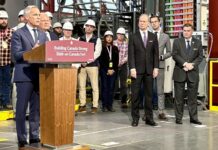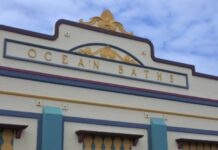Imagine walking through a vibrant neighborhood that seamlessly blends modern architecture with community spirit. Urban redevelopment is not just about erecting new buildings; it’s about revitalizing spaces and enhancing the quality of life for residents. Have you ever wondered how a well-planned redevelopment can transform an area? In this article, we’ll explore the key aspects of urban redevelopment, focusing on its benefits, challenges, and the critical role it plays in shaping our cities.
Urban redevelopment involves the renovation or reconstruction of existing structures and public spaces. It aims to improve urban environments by addressing issues like decay, insufficient infrastructure, and a lack of amenities. Throughout this article, you’ll discover how smart planning and community involvement can lead to successful transformations.
Understanding Urban Redevelopment
Urban redevelopment is a multifaceted process that includes several stages. Typically, it begins with identifying areas in need of improvement. These areas may be plagued by abandoned buildings, economic decline, or inadequate public services.
Once potential sites are identified, community engagement becomes vital. The input of residents can guide developers in creating spaces that reflect the needs and desires of the people who live there. This collaborative approach not only fosters a sense of ownership but also ensures that the redevelopment meets the expectations of the community.
Benefits of Urban Redevelopment
When done correctly, urban redevelopment can yield numerous advantages:
- Economic Growth: New developments can attract businesses, creating jobs and boosting local economies.
- Improved Infrastructure: Upgrading roads, public transport, and utilities enhances overall accessibility.
- Enhanced Quality of Life: Parks, recreational spaces, and community facilities promote a healthier lifestyle.
- Environmental Sustainability: Redevelopments often incorporate green spaces and sustainable practices, benefiting the environment.
But, how does this translate into daily life? Imagine living in a neighborhood where your local park is well-maintained, public transport is efficient, and shops are within walking distance. It’s about creating a thriving community where people enjoy living.
Challenges in Urban Redevelopment
Despite its many benefits, urban redevelopment is not without obstacles. One major hurdle is gentrification, where rising property values can displace long-time residents. This highlights the importance of balancing development with affordability.
Moreover, funding can be a significant issue. Securing financial backing for large projects often requires navigating complex regulations and competing interests. Additionally, environmental concerns must be addressed to ensure that redevelopment does not harm local ecosystems.
Successful Examples of Urban Redevelopment
Cities around the world have successfully executed redevelopment projects that serve as inspiring models. For instance:
- The High Line in New York City: This elevated park transformed a disused rail line into a vibrant public space, showcasing how adaptive reuse can benefit urban areas.
- Docklands in Melbourne: Once an industrial area, it has been revitalized into a bustling hub of residential, commercial, and recreational spaces.
- Barcelona’s Superblocks: A clever initiative that reduces traffic and prioritizes pedestrian spaces, enhancing urban livability.
These examples highlight how thoughtful design and community involvement can lead to thriving urban environments.
The Future of Urban Redevelopment
As cities continue to grow, the need for effective redevelopment will only increase. With rising populations and climate change challenges, urban planners must innovate continuously.
By integrating technology, such as smart city solutions, and focusing on sustainability, we can create resilient urban spaces. What role do you think communities should play in shaping their future environments? Engaging in discussions and advocating for your needs can make a significant difference.
Urban redevelopment is more than just construction; it’s about envisioning a better future. Whether through economic revitalization or community engagement, the possibilities are endless. How will you contribute to your community’s transformation?



















